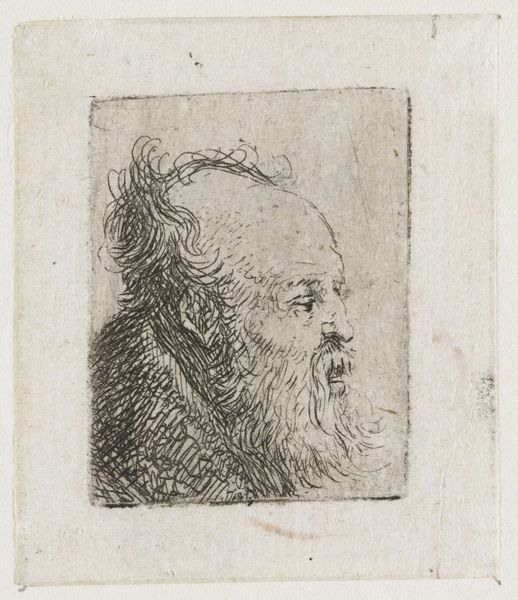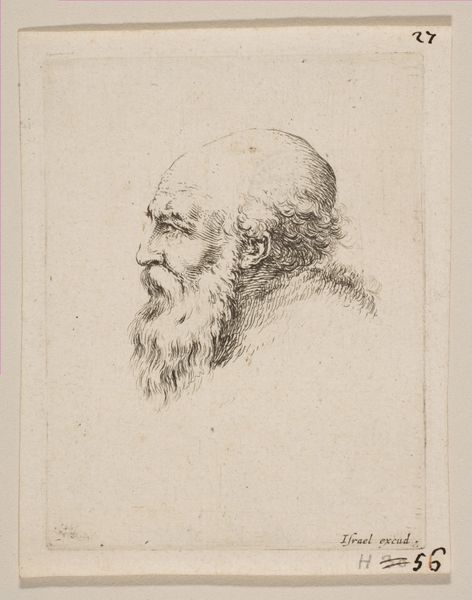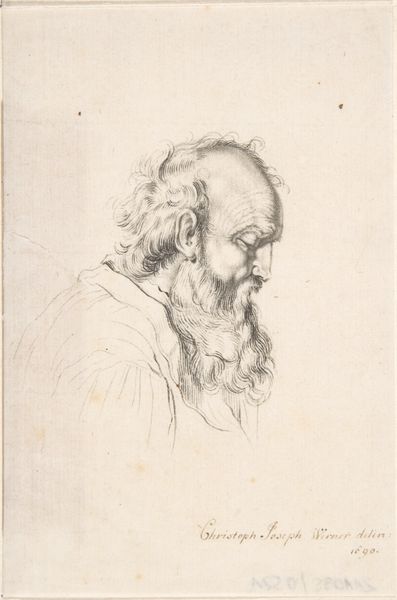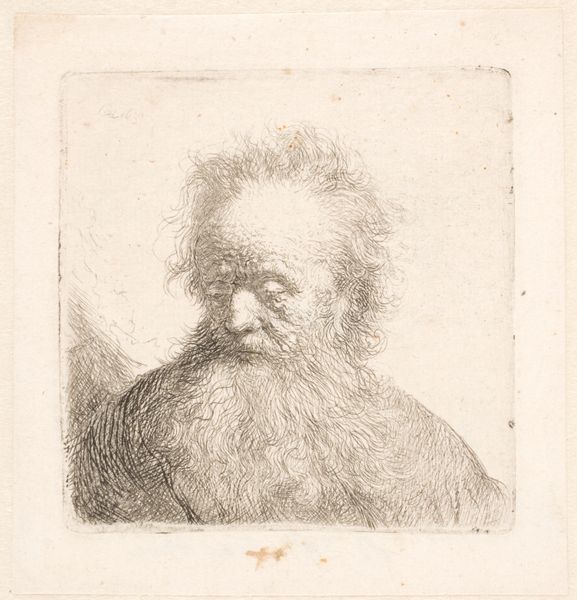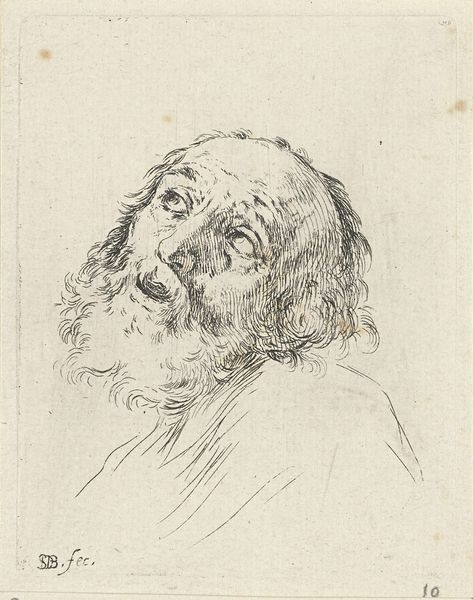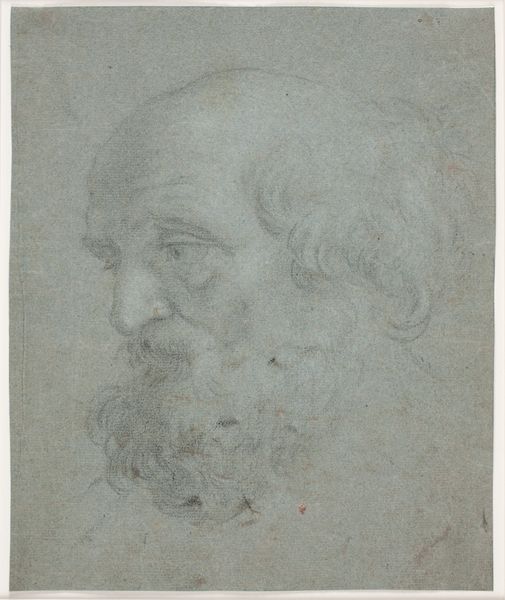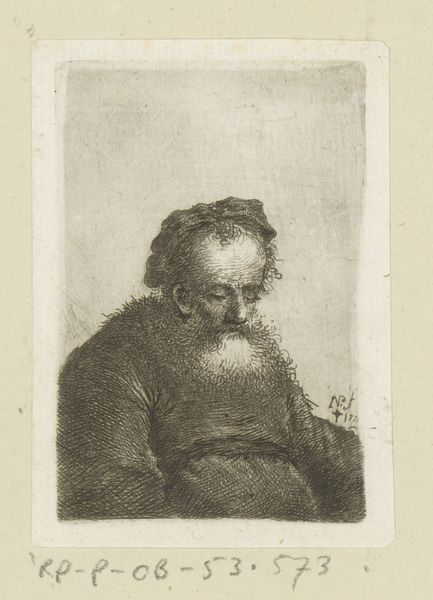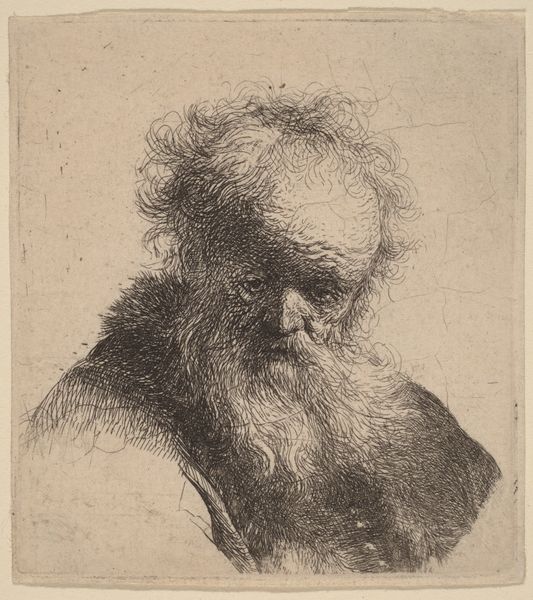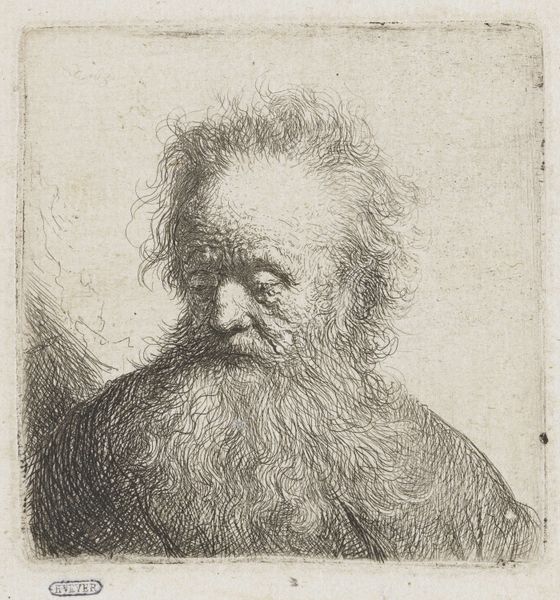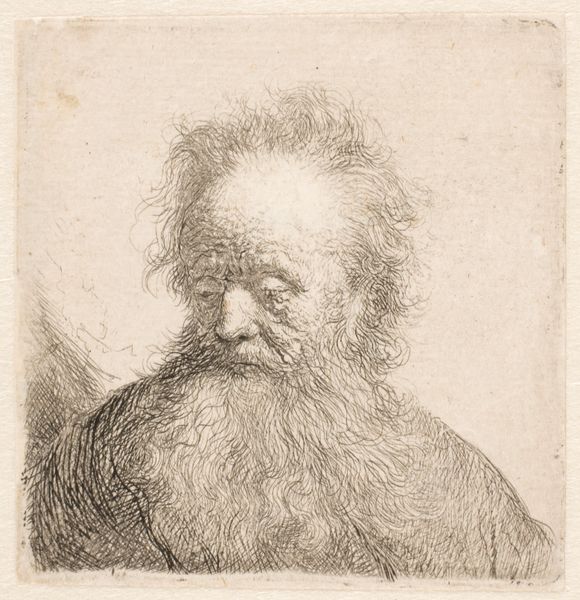
Sheet of studies of men's heads: old bearded man nearly in profile to right: mouth half open c. 1629
0:00
0:00
drawing, paper, ink
#
portrait
#
pencil drawn
#
drawing
#
self-portrait
#
baroque
#
pencil sketch
#
charcoal drawing
#
paper
#
11_renaissance
#
ink
#
pencil drawing
Dimensions: height 36 mm, width 28 mm
Copyright: Rijks Museum: Open Domain
Rembrandt van Rijn created this tiny etching of an old, bearded man in the Dutch Republic at a time when the print market was expanding, and artists were exploring the possibilities of the new medium. Rembrandt's mastery of light and shadow, visible here even in this small format, allowed him to create a sense of depth and texture. But beyond the technical skill, this image speaks to the changing role of the artist in 17th-century Holland. No longer simply a craftsman producing works on commission, artists like Rembrandt were increasingly working independently, producing images for a growing market of collectors and connoisseurs. The etching process itself facilitated this shift, allowing for the relatively quick and inexpensive production of multiple copies. To understand this work fully, we might turn to archival sources, such as inventories of print shops, collectors' lists, and the records of art academies. This will help us understand how artists like Rembrandt navigated the evolving art world and how their work circulated within the broader culture.
Comments
No comments
Be the first to comment and join the conversation on the ultimate creative platform.
